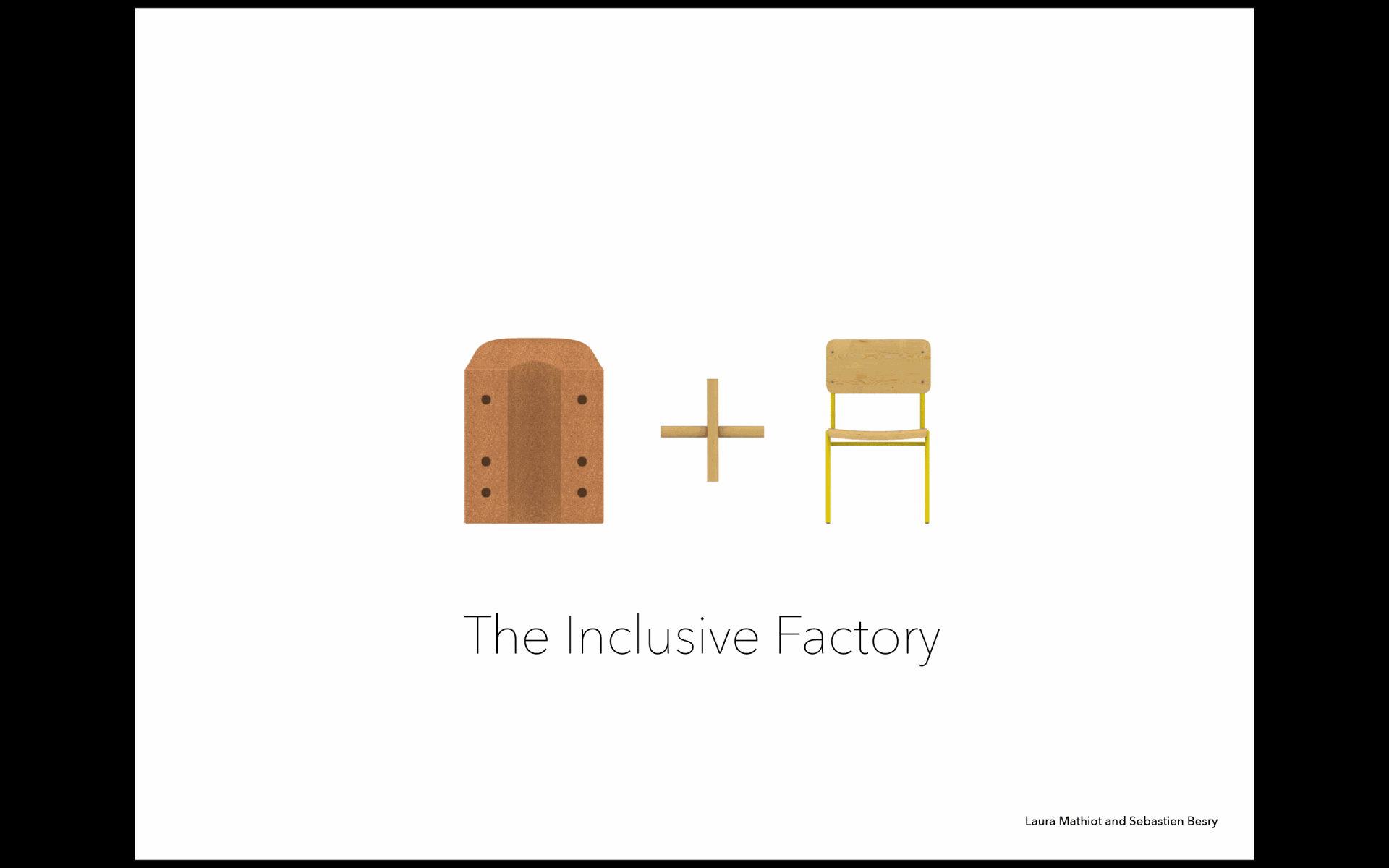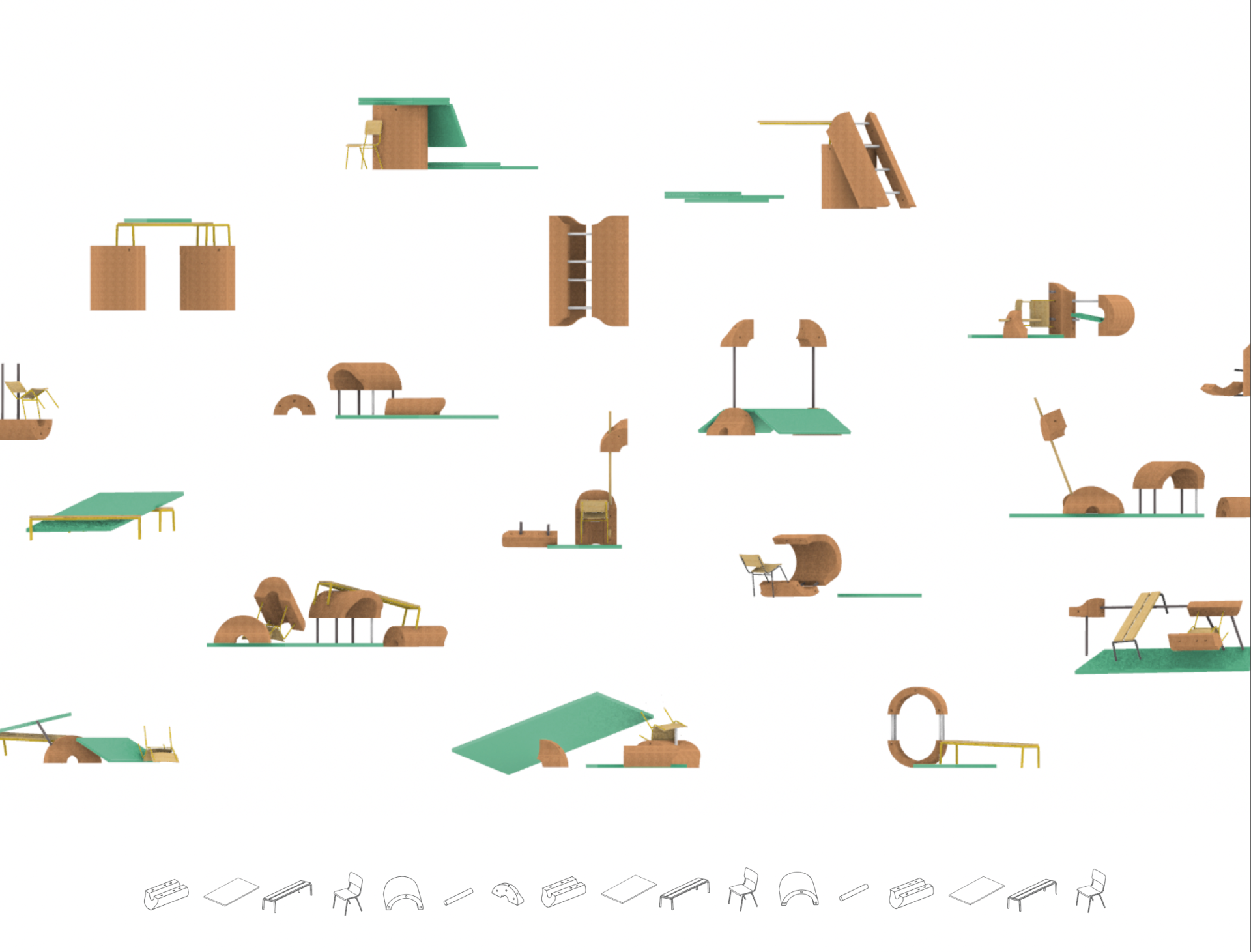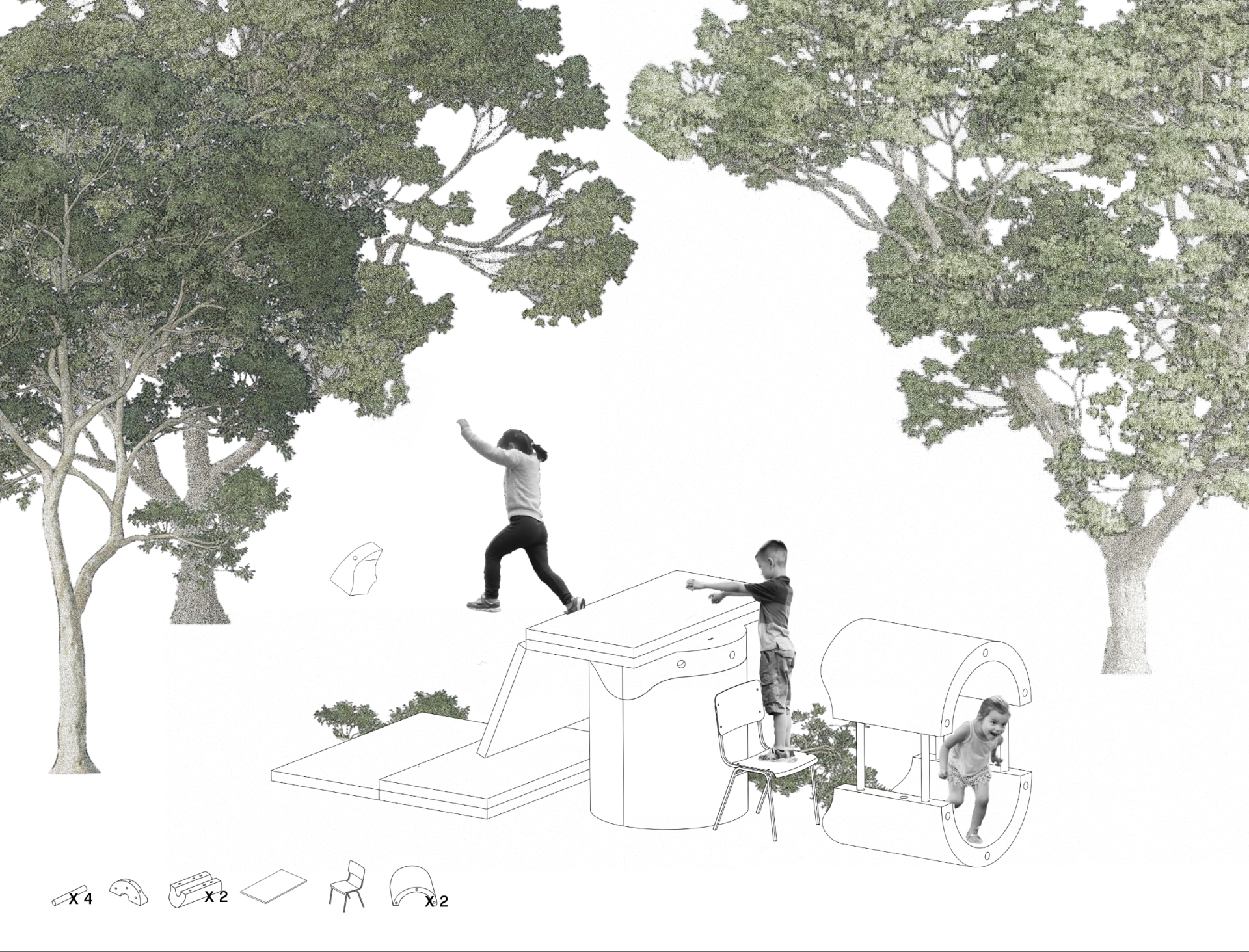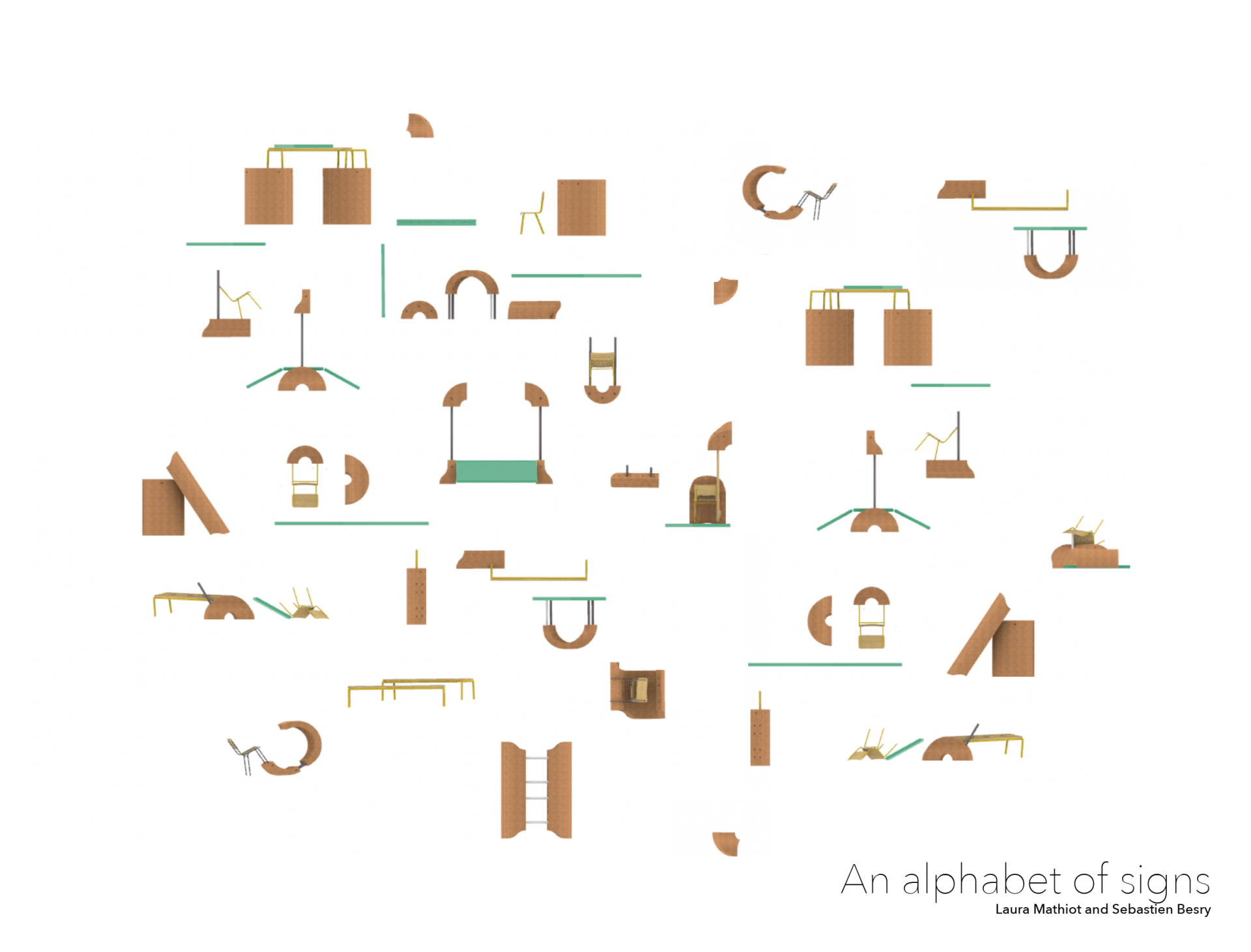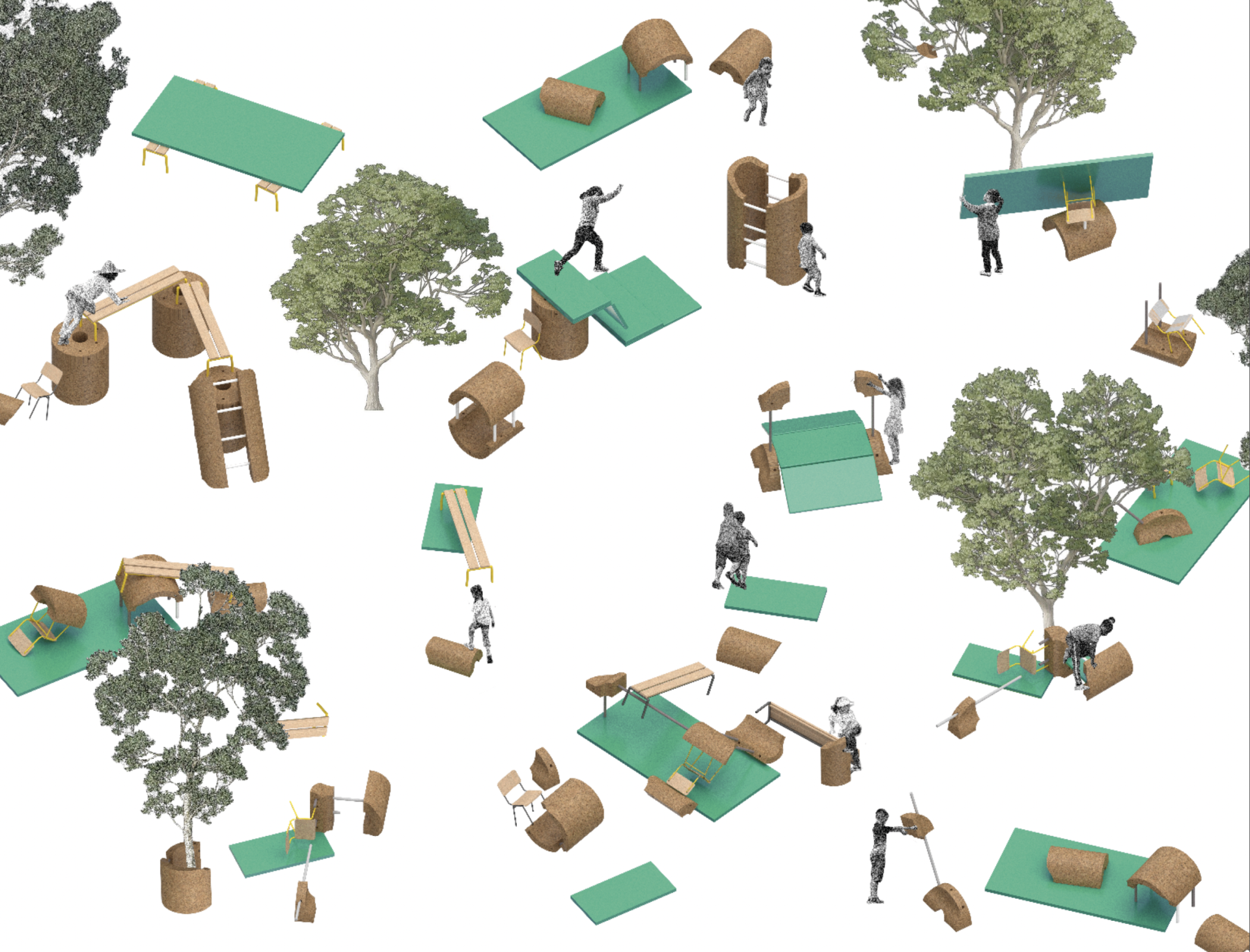The inclusive factory
Basic information
Project Title
Full project title
Category
Project Description
The schoolyard is an essential factor in the learning of children. It influences their way of understanding their environment and people around them. The Inclusive Factory is a playful way to vegetate schoolyards by implanting cork games and changing temperature of educational spaces. Children build their play-spaces with plants thanks to the help of others in order to see playgrounds as inclusive co-constructive ecosystems. A pedagogy open to creativity and observation towards the outside.
Geographical Scope
Project Region
Urban or rural issues
Physical or other transformations
EU Programme or fund
Which funds
Description of the project
Summary
The Inclusive Factory is for children a way of regaining a sense of belonging with nature thanks to a life-cycle pedagogy. By greening schoolyards in Paris, we realize that it can be extend all over Europe. A concrete way to prioritize neglected places thanks to real inclusion through play. The schoolyard appeared to be an important factor in the development of the child, a place where he meets others. It also allows supervisors to get to know children differently, in particular their creative strength and their way of apprehending the world. The work of the psychiatrist Fernand Deligny as well as the Anji Play Method implanted in Asia guided our approach of making schoolyards more inclusive and sustainable. Playing is now a set of choices, cooperation, risk-taking. Here the act of construction is perceived as a liberating act, language and anxieties, a way for the child to appeal to the intelligence of his imagination.
We have therefore designed a language system using school material resulting from the recovery of the school system. Usually a strict environment, the schoolyard will be deconstructed by children thanks to cork units we made, material ecologically resilient and suitable for outdoor use. Each cork unit has a neutral aesthetic, functioning as an alphabet of shapes in space. They can be associated with each other, raising them to an empowering scale. It is through this language system and this neutral aesthetic that school materials will take on a new dimension for children. Once these elements are put between children’s hand, the schoolyard becomes a fantastic problem to solve. A tolerance appears, we make mistakes during play time, we bicker, we start again. The game is intended to be inclusive, cooperation, risk-taking. Here the act of construction is perceived as a liberating act, language and anxieties, a way for the child to appeal to the intelligence of his imagination. Through play, the yard adapts and evolves to the rythm of children.
Key objectives for sustainability
The schoolyard is an essential factor in the learning of children. It influences their way of understanding their environment and people around them. This neglected space has a real impact on the construction in the collective imagination of a young audience, especially in urban environment. Our project entitled The Inclusive Factory puts children in an active position : it offers them possibilities to act on their own environnement, a playful way to vegetate schoolyards by implanting cork games on trees and grass. The aim is to reduce heat and water accumulation during soil flooding. Schoolyards are much more than just a place to relax. They may trigger thought on how body activity reacts facing nature. Children start considering vegetation as evolving elements and not just forms of decoration. The Inclusive Factory has been thought to be installed in most schools as it adapts easily to different soils. Children build their play-spaces with plants thanks to the help of others in order to see playgrounds as a co-constructive ecosystem. Cork games unit are an adaptable pedagogy available to schools. It’s a high potential material for them : fire-resistant and rot-resistant. A source for playful construction thanks to its strength of resilience, its resistance to impacts and its sound isolation capacity. Cylinders are recovered directly from factories and then cut in 4 lines and made into 9 pieces. These cylinders are then sent to schools which adapt them to their own equipment, The production of cork is a 100% natural, obtained by the debarking of cork oaks in Europe, its thermic compression allows minimal material loss. Suberin, the resin of trees, acts as a natural binder which agglomerates the granules, allowing large volumes, resistant and yet light and deployable in space by children. All schools have a school equipment recovery system. To improve this circular economy The Inclusive Factory re-uses chairs, benches, stools and mats thanks to cork modules.
Key objectives for aesthetics and quality
Cork modules of The Inclusive Factory are real language elements permitting the expression of oneself in space. The aesthetics of these modules are simple and minimalist in order to achieve a most universal application. Curves fit together and stand out to create some complexity in games. Here, construction is perceived as a liberating activity, liberator of language and anxieties, in tribute to Places of Life set up by Fernand Deligny, French psychiatrist specialized in mental disorders in children and adults. The Inclusive Factory allows inclusion and builds up confidence through creative communication: children perceive their schoolyard as a new microcosm appealing to their intelligence. Each module can live independently or by assembly. Assembling cork pieces with school equipment makes the building up of real structures possible. In a monumental vision, the size of the cork pieces is important. Their volume is an essential socializing factor that encourages children to call on others in order to build the construction they desire together. This monumentale scale adapts to schoolyards as much as to children. It elevates them to a responsible scale at the same time. Cork volumes are encompassing and sonorizing. In this cacophony each element finds a special place it is connected to the outside by cork elements. Thus stools and even benches take on new uses. School equipment supports a new imaginary. Benches become bridges, stools become places where the child can reach his imagination, rise and take full place in the schoolyard. Even chairs, become instruments he can manipulate and communicate with in game situations. The aesthetics of The Inclusive Factory is scalable: it fits according to climate and children moods, evolves faithfully to the rhythms of the children occupying it. This alphabet of signs is a sort of philosophy, educating the eye to tolerance, true poetry of chance and freedom.
Key objectives for inclusion
This constructive system promotes the inclusion of children. It allows them to use their creative imagination through spaces. The Inclusive Factory gives everyone the freedom to approach the game in its own way, adapting spaces to different children. It is a caring and trusting way for adults to look on children. The size of modules and constructive principles engage children to cooperate. They move, assemble, construct and play together : there’s a real encounter between children and their imagination. Adults can see how they approach their school space : risk is perceived as important and positive here. Trust allows children to fully express themselves, in their apprehension of space and relationship with each other. The courtyard and construction becomes a challenge to solve , appealing to their intelligence and imagination. Thus to trust is above all to restore confidence to children in their way of being creative. Mixing neutral cork shapes with normalized objects such as school material creates a tension in creation. This tension allows children to start from their everyday environment: their school world, for example. Language is freed through the volumes the child conjugates in his own way. Adults can decrypt this constructive language. The child’s also included in this constructive act, both observer and actor.
Physical or other transformations
Innovative character
The Inclusive Factory builds spaces of transition children need to grasp. They can differ from one school to another and question on evolving environment. The systems are replicable and do not enclose the space in a closed use. The space must be an opening , not limiting the imagination, abling its transformation (heterotroph). In the midst of an ecological transition, spaces are being renewed. The Inclusive Factory accompanies this transition ; it makes children pay attention to the environment around them and the elements that make it up. Neutral elements educate the eye to tolerance: we make mistakes, start again, ask for help, bicker. The child is not afraid to answer the questions he has asked himself . This tension between the elements frees the imagination and creates a new alphabet, a new language through creation. This aesthetics revaluing elements in a circular economy already well established, calls on the recovery of school elements, teaches to see the potential in objects or subjects , potential that seemed frozen in their forms and in their uses. The cork industry exploits most of the quality of cork, especially the fact that it can be retransformed using a minimum of chemical material. In its production the life cycle of the tree is respected, several debarking is carried out to the integrity of the tree, the cork is ground and frozen in a natural way thanks to the resin it contains. Between transition, tolerance, liberation of the imaginary and development of the exist and the cycle, The Inclusive Factory aims to build the adults and actors of the world of tomorrow at the scale of the schoolyard.

